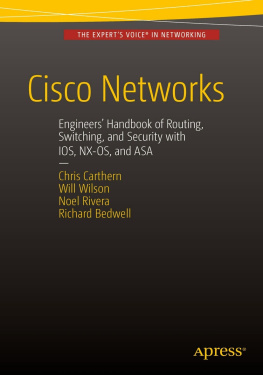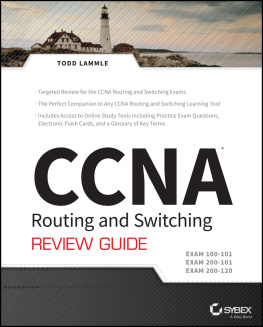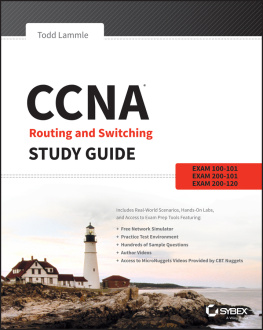Chris Carthern
Bangkok, Krung Thep, Thailand
William Wilson
PSC 559 box 6092 FPO AP 96377 USA, HI, USA
Noel Rivera
PSC 559 BOX 6092. FPO, AP, HI, USA
Any source code or other supplementary material referenced by the author in this book is available to readers on GitHub via the books product page, located at www.apress.com/978-1-4842-6671-7 . For more detailed information, please visit http://www.apress.com/source-code .
ISBN 978-1-4842-6671-7 e-ISBN 978-1-4842-6672-4
https://doi.org/10.1007/978-1-4842-6672-4
Chris Carthern and William Wilson and Noel Rivera 2021
This work is subject to copyright. All rights are reserved by the Publisher, whether the whole or part of the material is concerned, specifically the rights of translation, reprinting, reuse of illustrations, recitation, broadcasting, reproduction on microfilms or in any other physical way, and transmission or information storage and retrieval, electronic adaptation, computer software, or by similar or dissimilar methodology now known or hereafter developed.
The use of general descriptive names, registered names, trademarks, service marks, etc. in this publication does not imply, even in the absence of a specific statement, that such names are exempt from the relevant protective laws and regulations and therefore free for general use.
The publisher, the authors and the editors are safe to assume that the advice and information in this book are believed to be true and accurate at the date of publication. Neither the publisher nor the authors or the editors give a warranty, expressed or implied, with respect to the material contained herein or for any errors or omissions that may have been made. The publisher remains neutral with regard to jurisdictional claims in published maps and institutional affiliations.
This Apress imprint is published by the registered company APress Media, LLC part of Springer Nature.
The registered company address is: 1 New York Plaza, New York, NY 10004, U.S.A.
Introduction
Cisco Networks, Second Edition is a practical guide and desk reference for Cisco engineers. For beginning and experienced network engineers tasked with building LAN (local area network), WAN (wide area network), and data center connections, this book lays out clear directions for installing, configuring, and troubleshooting networks with Cisco devices. What is new is this edition includes discussions about software-defined (SD) networks and building Dynamic Multipoint VPNs (DMVPNs) using IPSec (Internet Protocol Security) Virtual Private Networks (VPNs). A new chapter on Quality of Service (QoS) has been added to teach managing network resources by prioritizing specific types of network traffic. The second edition has an updated wireless section which focuses on an updated controller and integration with Cisco Identity Services Engine (ISE) and Cisco Prime Infrastructure. The emphasis throughout is on solving the real-world challenges engineers face in configuring network devices, rather than on exhaustive descriptions of hardware features.
This practical desk companion doubles as a comprehensive overview of the basic knowledge and skills needed by CCNA and CCNP exam takers. It distils a comprehensive library of cheat sheets, lab configurations, and advanced commands that the authors assembled as senior network engineers. Prior familiarity with Cisco routing and switching is desirable but not necessary, as the authors start their book with a review of network basics and move on to configuring routers and switches from a beginner level. The purpose of this book is to provide a practical guide for network engineers who work with Cisco devices on a daily basis. This book is not a Cisco certification guide, but you will learn key concepts that will be on exams to include the CCNA and CCNP. This book intends to be a day-to-day reference for the daily tasks you perform as a network engineer.
This book will cover advanced topics such as configuring wireless networks, securing your networks, and covering best practices. Learn how to strengthen your networks with VPNs and security devices and deployment using Cisco Identity Services Engine (ISE). By the end of the book, you will have mastered deploying Cisco networks.
Acknowledgments
Special thanks to my coauthors for your contributions to this book. Im extremely grateful to my parents, Taylor and Lisa, and sister, Breanna, for all the support you have given me and the importance you placed on higher education. To my best friend, Tony Aaron II, I would like to express my deepest appreciation for the endless support. Thanks should also go to our technical reviewer, Marc Julian, for all the feedback on the content and exercises in the book; this book is better because of your diligent reviews. Lastly, I very much appreciate my publisher, Apress, for valuing our first edition and trusting us to complete a second. For anyone I missed, thank you all for your support and helping me become a better engineer.
Chris Carthern

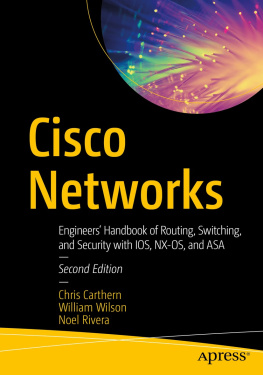
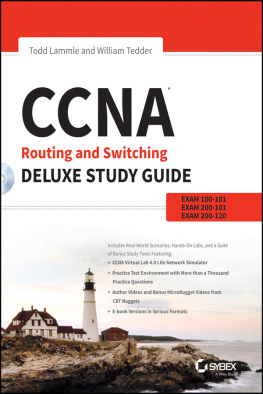


![switching.social [switching.social] - The Switching Social Handbook](/uploads/posts/book/131346/thumbs/switching-social-switching-social-the-switching.jpg)

